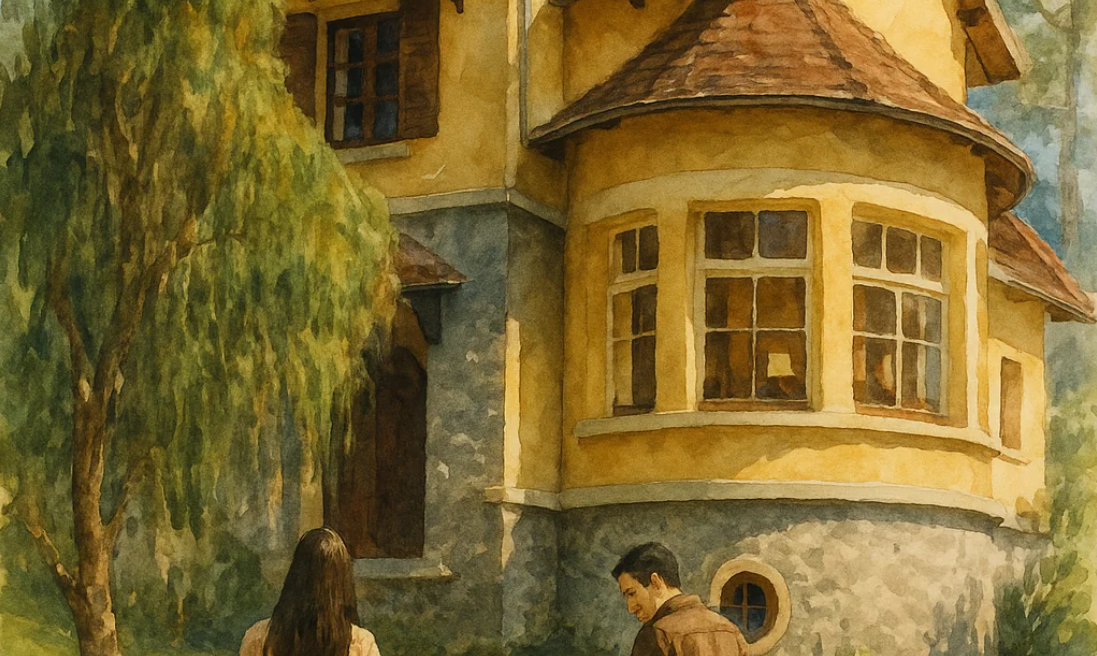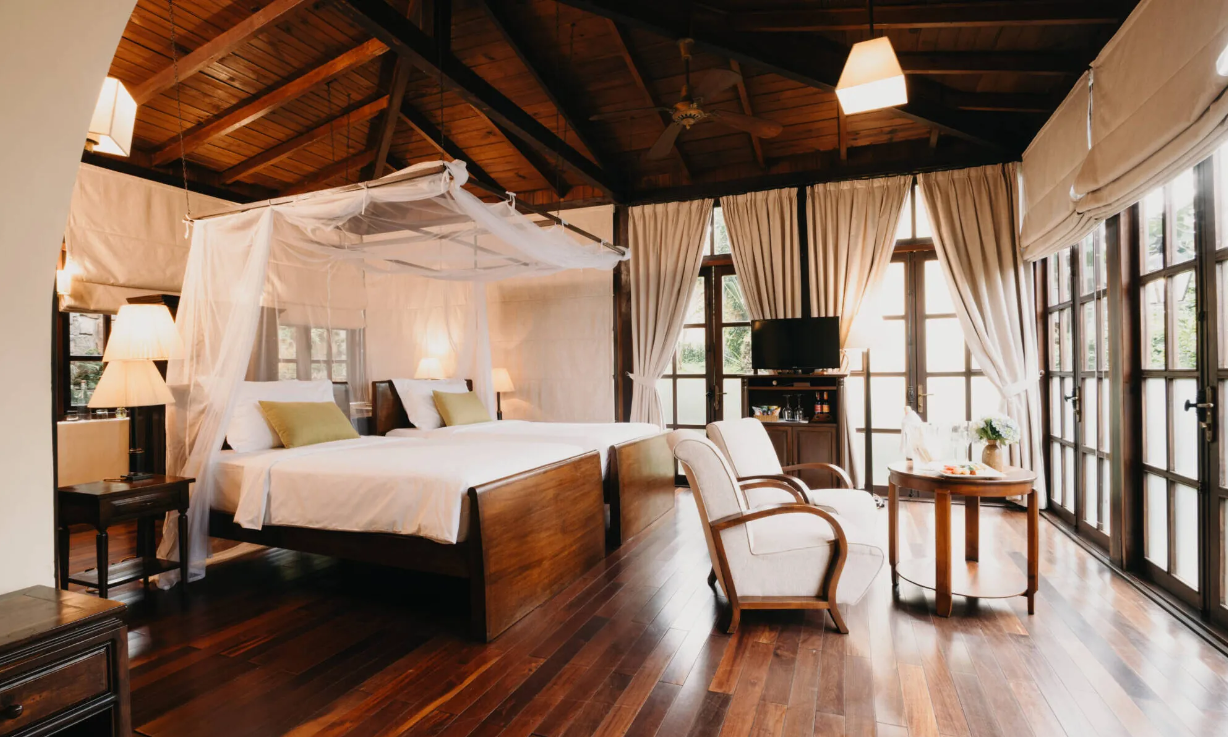An erstwhile French hill station in Vietnam, Dalat is inside two hours’ flight from Hanoi. The town was so beautiful that the Americans and North Vietnamese implicitly agreed not to bomb it during the war.
If you haven’t heard of it yet, Dalat is a hillside town in the central plateaus of Vietnam, made around a lake and fenced by forests and hills offering breath-taking views. In the Trung Bo, exactly in the centre, the Annam Mountain array concludes at 2,598 metres. It’s here that you will discover Dalat, the charm of the highlands, at an elevation of 1,500 metres. Known as the city of everlasting springtime, it was home to many Europeans through the colonial epoch who were fascinated by the weather. From this era in antiquity, Dalat has conserved its 1930s architecture with half-forested Normandy-style homes, Basque and Savoyard cottages, and a somewhat antiquated ether. In the hub of the city, we find the completely pink cathedral with stained glass windows made in France. The architecture of the yellow train station is a replication of the Deauville station in Normandy. It’s also not unusual to see an old Peugeot 403 four-wheel drive on the boulevards of Dalat. In addition to its bygone legacy, Dalat is also popular for its waterfalls, lakes, and extraordinary plateaus sheltered by remarkable flora. Plentiful roses, camellias, rhododendrons, and xac phao flowers grow in the region, as well as an amazing assortment of vegetables and fruits (read: persimmon apples, plums, peaches, strawberries, and grapes) available in the centrally located market.
A little piece of France
If Dalat is petite Paris, then Ana Mandara is petite Dalat. In the core of a sumptuous park, the resort’s 17 villas, built by the French for the French in the 1920s, have been renovated into an opulent resort. These villas were originally built in the 1920s and 1930s, Dalat’s foundation and expansion eras. At the end of the Indochina Wars in 1954, the villas were engaged by affluent Vietnamese councils and their families until all of them were given to numerous Vietnamese families after the American war in 1975. Though the villas were no longer in use and extremely waned later, At the commencement of 2003, after investigating and measuring the serviceability of the site, the Ana Mandara makeover undertaking was kicked off and led by Bernhard Bohnenberger, Executive Director of Six Senses Group, and Parisian Designer Brigitte Dumont De Chassart, conducive to safeguarding and preserving the architectural riches of the city. In 2006, ANA Mandara formally went on to revive itself as a luxury resort after three years of refurbishment to its erstwhile magnificence, with all care taken to reserve its original design, style, and charisma. Today, though this serene pine grove is no longer a Six Senses resort, its relics are the hotel complex of its former owners.
TIMELESS AND
SIGNATURE DESIGNS
With a saga of nearly 100 years, Ana Mandara’s origin lies in the excellence of the past. The wistfulness of the landlords comes gracefully out of the designs that shadow the typical and French-inspired architecture integrating conventional Vietnamese manufacturing thoughts. In all of the villas, a gamut of Western key design types, such as Romanesque and Gothic from Brittany, Norman from Normandy, Provence, and Spanish Rebirth from Basque and Savoie, was retained. All is a nostalgia of an ancient heavenly village accentuated by the brilliant shades of colours of different beautiful flowers year-round. Each villa is dissimilar in design, with four to five rooms per villa, each with a communal living room. In the rooms, whose numbers range from three to five, depending on the villa, the mass of the furniture is a precise facsimile of the French colonial flair. The awning bed, the bit of furniture intended to hide the television, the bathroom sinks, the patten bathtubs and wooden boards, the old frying pans, the ceiling fans, and even the vintage switches reminisce about the French colonial age. Each detail adds up to taking one back in time. Guests are carried inside the estate in a vintage Peugeot 403 or Citron. The villas each have names invoking historical personalities; for example, the Scientific Villa is named in admiration of the French doctor Alexander Yersin.
Wherever one looks, the French influence is all-pervasive. To complete the heavenly picture, there’s a marvellous swimming pool made of slate, a spa, a restaurant with a hearth and patios, and, as one would expect, a wine cellar offering hand-picked French traditional wines. For those into well-being, there is a fabulous spa that’s accessible all day alongside the single heated swimming pool in Dalat.
SUMMING UP
All in all, as an Indian, I truly value this extraordinary location in Dalat, along with the remarkable historic story of the hotel and environs. Getting the flavour of early 1900s France just a few hours from India is practically like a two-for-one experience. Ana Mandara is the impeccable catalyst for discovering Dalat and the milieus in Lam Dong province. The immaculate service is incomparable and earnest, as any Indian would love it. Immersed in history with its nearly 100-year-old villas with conventional French architecture cushioned in 7 hectares of opulent pine forest with expansive scenic views of the city. Although only ten minutes from the hub of the city, it is tucked away in a virtually rural district with a virtually alpine ambiance and a very special backdrop that anyone would have experienced along their voyage, giving a feeling of peace and sanctuary from the jostle and stir of the lively heart of Dalat. Keeping it as a base, do plan an itinerary that includes the Alpine Coaster, a boat ride on the lake, a walk in the night market, a buggy ride down the valley of love, and the Clay Tunnel. Dalat is also brimming with beautiful cafes and restaurants with amazing views. Fellow Indians, this is the place you will simply fall in love with, just like me.
Akanksha Dean, an independent chef and food and travel writer, is the first Indian to have trained at Osteria Francescana in Modena, Italy, rated as the world’s best restaurant in the World’s 50 Best Restaurants in 2016 and 2018 and currently in the Best of the Best category.








